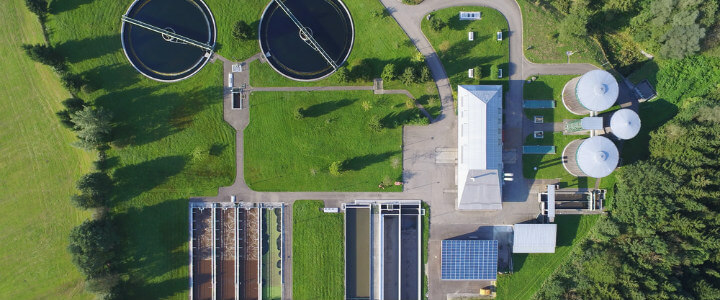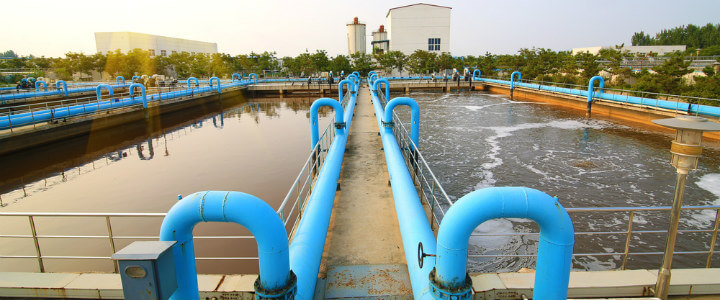What Is the Best Method for Wastewater Treatment?
Written by AOS Treatment Solutions on November 10, 2017

Wastewater is generally defined as water that has already been used in some capacity. Water from homes, businesses or industry is considered wastewater. Melted snow and runoff water from outdoor activities is also wastewater. There are several important reasons why you need to pay careful attention to how wastewater is processed and the different methods by which to treat it.
Why Treat Wastewater?
Wastewater can contain chemical, biological or physical pollutants. This can make it unsafe for human uses. It can potentially cause severe illness if untreated wastewater gets into the public drinking supply. Most wastewater is usually released back into the environment after treatment.
What Treatment Processes Are Used?
There are several steps you would normally take when treating wastewater in a municipal facility. According to NYC Environmental Protection, wastewater from New York City goes through five distinct processes that include preliminary, primary and secondary treatments, as well as disinfection and sludge treatment. Most treatment facilities employ similar steps or combine steps when treating wastewater.
1. Preliminary/Primary
Preliminary treatment normally includes screening the water to remove large objects and debris. Wastewater pretreatment can include everything from twigs and rocks to bottles and diapers. For industrial users, nation pollutant discharge elimination system (NPDES) sets wastewater pretreatment standards that are more strict.
2. Secondary
This is where your treatment options begin to diverge. Coagulation, along with flocculation, are methods that require a combination of chemicals. These processes cause particles to stick together so at a later point they can be more easily filtered out. Aluminum sulfate is a chemical often used in this process. After these insoluble fragments settle at the bottom through sedimentation, the purified water is filtered out. Filtration involves using a variety of filters to catch particles as the water flows through.
More about the primary and secondary treatment of wastewater here.
3. Disinfection
This is sometimes referred to as the tertiary treatment phase. Chlorine and chloramines are chemicals often used during the water treatment disinfection process. UV radiation is also sometimes used to disinfect water.
4. Sludge Treatment
The final stage of treating water will often include removing a sludge that is sometimes referred to as biosolids. According to Water Use it Wisely, the byproduct of sludge dewatering systems is sometimes used for agricultural purposes.

What Treatment Methods Are Best?
The previous section details the processes involved in treating wastewater. Biotech articles states that the specific methods used generally fall into three categories.
Biological
Biological methods are normally put in place when the water will be used for drinking purposes. Aerobic treatment and fermentation are both biological methods.
Physical
Physical methods include sedimentation, aeration and filtration. Sand filters are sometimes used in the oil water separation process to remove oil and grease particles.
Chemical
Chlorine is the chemical most often used in treating sewage and other types of wastewater. The process is called chlorination. This is the most effective means of destroying a variety of viruses and bacteria. A method known as neutralization is effective when treating industrial wastewater. Lime is sometimes used when treating acidic water.
What treatment solutions you’ll need will likely be determined by the type of wastewater, what contaminants are in the water and what the water will be used for after it’s treated. The best methods for treating wastewater should always coincide with regulations required in the state and locality where your facility is located. The methods used should also be as environmentally safe as possible.
Future Water Treatment Methods to Look For
Water treatment is a critical foundation of society. By expanding access to clean drinking water, safe water for home use and recycled water for agricultural purposes, water treatment improves the quality of life and security of millions of Americans each year. As technology has become more advanced, several unique and promising water treatment methods have begun to emerge, from systems for drought conditions to devices for hiking.
Water treatment is a complex and critical service that has historically been expensive and time-consuming. Luckily, these five promising technologies have the potential to make clean drinking water much more accessible to communities around the world in the coming years.
Why Choose AOS for Your Water Treatment Needs?
You need a company that has extensive experience and a proven track record in treating public water systems. AOS has been providing consultation services, technical support and customized wastewater treatment solutions since 1999. AOS offers cost-effective groundwater treatment solutions for municipal water supplies.
It’s critical to effectively treat wastewater so it can be reused or safely put back into the environment. AOS can provide standard as well as customized solutions that can meet all your wastewater needs.
Contact AOS today for more information on our water treatment consulting services.

